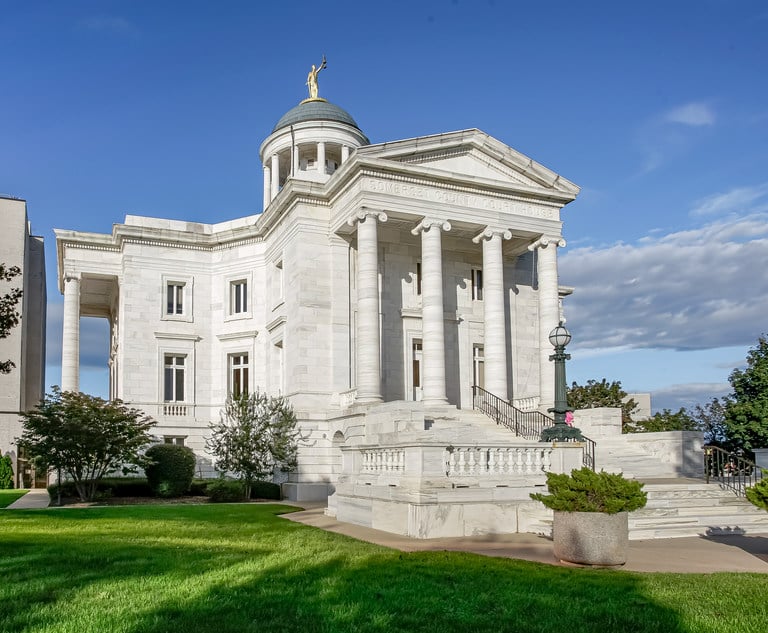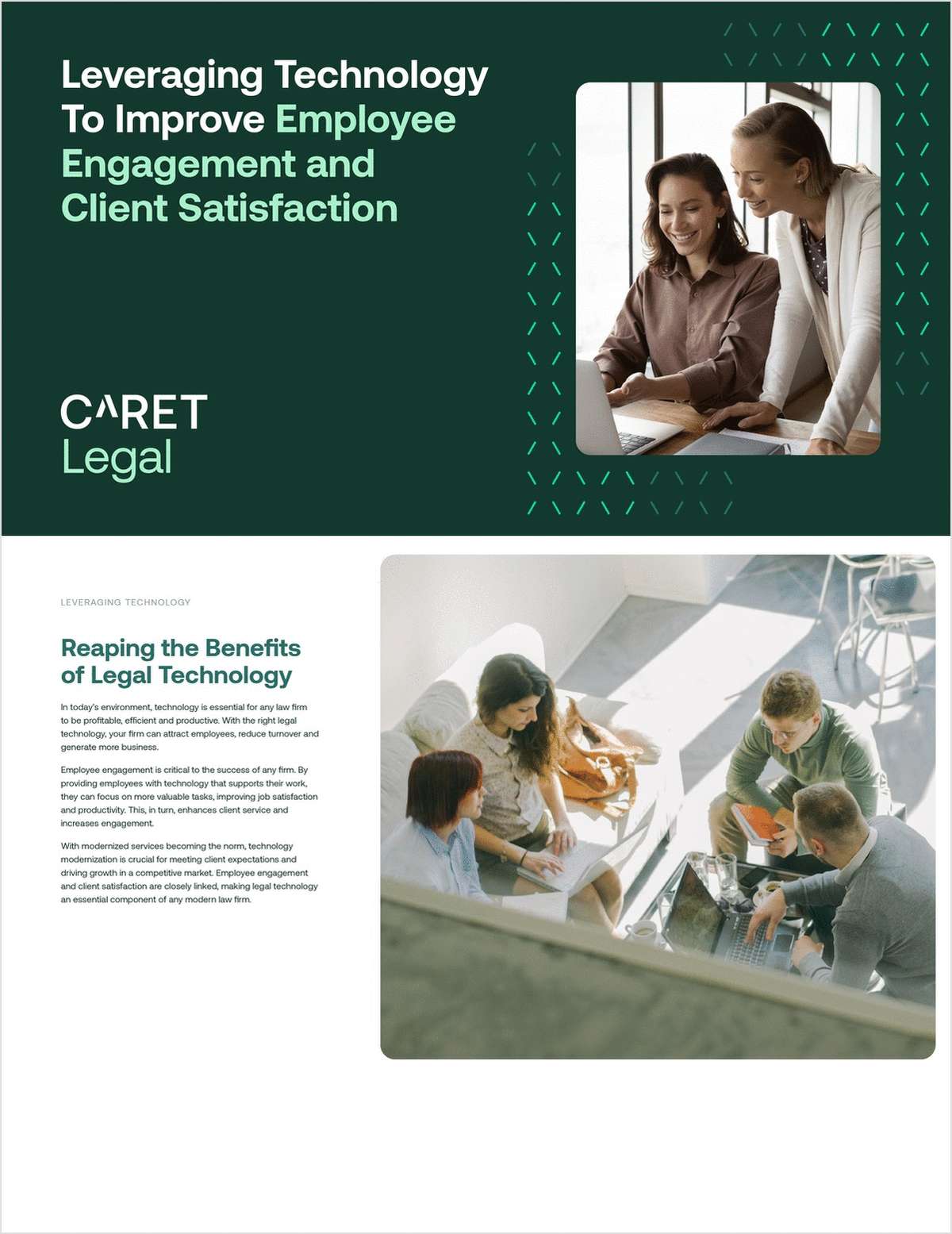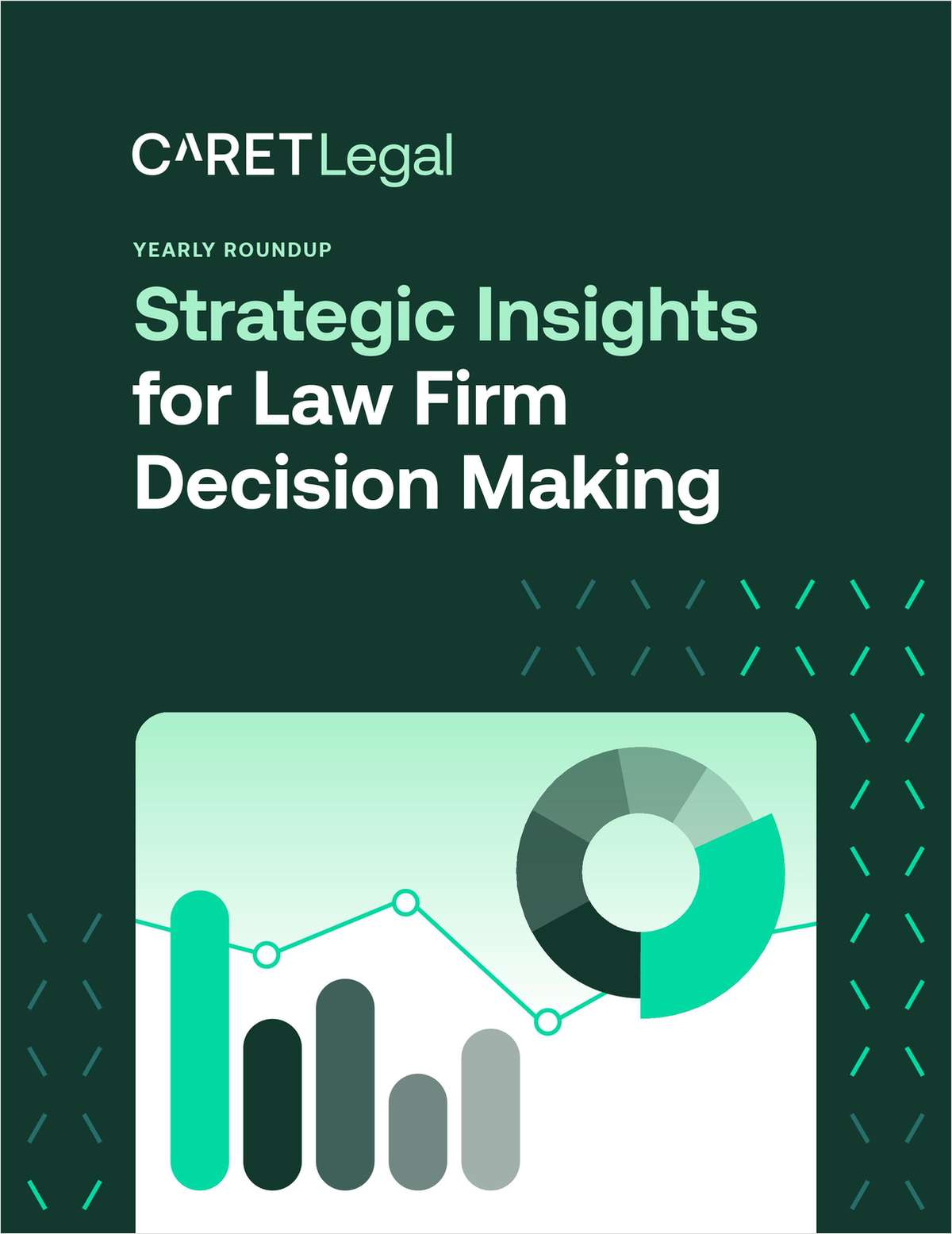Mostly White and Male: Diversity Still Lags Among SCOTUS Law Clerks
Research conducted by The National Law Journal found 85 percent of all law clerks since 2005 have been white and twice as many men as women gain entry.
December 11, 2017 at 04:00 AM
14 minute read
 U.S. Supreme Court building in Washington, D.C. (Photo: Diego M. Radzinschi/ALM)
U.S. Supreme Court building in Washington, D.C. (Photo: Diego M. Radzinschi/ALM) A year as a U.S. Supreme Court law clerk is a priceless ticket to the upper echelons of the legal profession. Former clerks have their pick of top-tier job offers and can command $350,000 hiring bonuses at law firms.
Four current justices were formerly clerks at the court—a record number—and three U.S. senators are former clerks. The general counsels of both Apple and Facebook once clerked at the high court. For aspiring appellate litigators and academics, a Supreme Court clerkship opens the creakiest doors.
But amid the luster of being a law clerk, there's an uncomfortable reality: It is an elite club still dominated by white men. While some variables are outside the court's control, few justices seem to be going out of their way to help boost diversity.
Research conducted by The National Law Journal found that since 2005—when the Roberts court began—85 percent of all law clerks have been white. Only 20 of the 487 clerks hired by justices were African-American, and eight were Hispanic. Twice as many men as women gain entry, even though as of last year, more than half of all law students are female.
The numbers show near-glacial progress since 1998, when USA Today and this reporter undertook the first-ever demographic study of Supreme Court clerks, revealing that fewer than 1.8 percent of the clerks hired by the then-members of the court were African-American (now it is 4 percent,) and 1 percent were Hispanic (now the figure hovers at roughly 1.5 percent). The percentage of clerks who are of Asian descent has doubled from 4.5 percent then to nearly 9 percent since 2005. Then, women comprised one-fourth of the clerks; now they make up roughly a third.
➤➤ SCOTUS Clerks: Who Gets the Golden Ticket? Join reporter Tony Mauro and Hogan Lovells partner Neal Katyal on Thursday, Dec. 14 for a conference call about law clerks and diversity. Click here for more details.
It's not an isolated problem in the legal profession. However, the ranks of Supreme Court clerks are less diverse and more male than junior attorneys at law firms and the stakes for society are certainly higher. Clerks play a crucial role in helping justices pick which cases to grant, and in writing opinions. Looked at it in its starkest terms, lack of diversity among clerks means the court's decisions on race and immigration continue to be shaped by players who have little personal experience to inform the discussion.
“This is an institution that is deciding things for everyone,” said Georgetown University Law Center professor Sheryll Cashin, an expert on civil rights issues and a former Thurgood Marshall clerk. “Having a range of perspectives and experiences among the law clerks would be useful.”
Interviews with participants in the clerk hiring process indicate that few justices are going out of their way to seek out minority candidates or to urge them to apply. Cashin said the justices need to be more proactive. “If diversity were a priority,” she said, “it would not be hard to find qualified people of color even in the elite universe that some of the justices are used to.”
Former law clerk Andrew Crespo, the first Latino editor of Harvard Law Review, said the justices could speak out if they want to increase diversity. “The court itself is an unparalleled position of leadership to encourage other institutions in the profession to help build a diverse pipeline that leads not only to more diverse Supreme Court clerks, but to a diversification of the bar itself.”
The NLJ research on clerks was accomplished through scrutiny of available public information, as well as phone calls and emails directed at former clerks and others—not all of whom responded. The National Law Journal asked all nine justices to help verify the data, and all nine declined, according to spokeswoman Kathy Arberg. All nine justices also declined to be interviewed about the diversity issue generally.
Among the NLJ's key findings:
● Since Chief Justice John Roberts Jr. joined the court in 2005, just 8 percent of the law clerks he's hired have been racial or ethnic minorities.
● At the other end of the spectrum, 31 percent of Justice Sonia Sotomayor's clerks have been non-white, making her chambers the most diverse.
● Low numbers span the court's ideological spectrum. Only 12 percent of the clerks hired by Justice Ruth Bader Ginsburg and Justice Clarence Thomas since 2005 were minorities. Ginsburg has hired only one African-American clerk since she joined the high court in 1993, and the same goes for Justice Samuel Alito Jr., who became a justice in 2006.
● While Ginsburg and Breyer have hired men and women in equal numbers, other chambers continue to be male-dominated. The court's swing vote, Anthony Kennedy, has hired six times as many men as women as law clerks since 2005. Gorsuch, in his second term, has hired just one female law clerk.
● Harvard and Yale law schools have tightened their grip on the clerk “market,” providing half of the court's law clerks since 2005, compared to 40 percent in 1998.
Read the full story and related coverage on the National Law Journal.
 U.S. Supreme Court building in Washington, D.C. (Photo: Diego M. Radzinschi/ALM)
U.S. Supreme Court building in Washington, D.C. (Photo: Diego M. Radzinschi/ALM) A year as a U.S. Supreme Court law clerk is a priceless ticket to the upper echelons of the legal profession. Former clerks have their pick of top-tier job offers and can command $350,000 hiring bonuses at law firms.
Four current justices were formerly clerks at the court—a record number—and three U.S. senators are former clerks. The general counsels of both Apple and Facebook once clerked at the high court. For aspiring appellate litigators and academics, a Supreme Court clerkship opens the creakiest doors.
But amid the luster of being a law clerk, there's an uncomfortable reality: It is an elite club still dominated by white men. While some variables are outside the court's control, few justices seem to be going out of their way to help boost diversity.
Research conducted by The National Law Journal found that since 2005—when the Roberts court began—85 percent of all law clerks have been white. Only 20 of the 487 clerks hired by justices were African-American, and eight were Hispanic. Twice as many men as women gain entry, even though as of last year, more than half of all law students are female.
The numbers show near-glacial progress since 1998, when USA Today and this reporter undertook the first-ever demographic study of Supreme Court clerks, revealing that fewer than 1.8 percent of the clerks hired by the then-members of the court were African-American (now it is 4 percent,) and 1 percent were Hispanic (now the figure hovers at roughly 1.5 percent). The percentage of clerks who are of Asian descent has doubled from 4.5 percent then to nearly 9 percent since 2005. Then, women comprised one-fourth of the clerks; now they make up roughly a third.
➤➤ SCOTUS Clerks: Who Gets the Golden Ticket? Join reporter Tony Mauro and
It's not an isolated problem in the legal profession. However, the ranks of Supreme Court clerks are less diverse and more male than junior attorneys at law firms and the stakes for society are certainly higher. Clerks play a crucial role in helping justices pick which cases to grant, and in writing opinions. Looked at it in its starkest terms, lack of diversity among clerks means the court's decisions on race and immigration continue to be shaped by players who have little personal experience to inform the discussion.
“This is an institution that is deciding things for everyone,” said
Interviews with participants in the clerk hiring process indicate that few justices are going out of their way to seek out minority candidates or to urge them to apply. Cashin said the justices need to be more proactive. “If diversity were a priority,” she said, “it would not be hard to find qualified people of color even in the elite universe that some of the justices are used to.”
Former law clerk Andrew Crespo, the first Latino editor of Harvard Law Review, said the justices could speak out if they want to increase diversity. “The court itself is an unparalleled position of leadership to encourage other institutions in the profession to help build a diverse pipeline that leads not only to more diverse Supreme Court clerks, but to a diversification of the bar itself.”
The NLJ research on clerks was accomplished through scrutiny of available public information, as well as phone calls and emails directed at former clerks and others—not all of whom responded. The National Law Journal asked all nine justices to help verify the data, and all nine declined, according to spokeswoman Kathy Arberg. All nine justices also declined to be interviewed about the diversity issue generally.
Among the NLJ's key findings:
● Since Chief Justice John Roberts Jr. joined the court in 2005, just 8 percent of the law clerks he's hired have been racial or ethnic minorities.
● At the other end of the spectrum, 31 percent of Justice
● Low numbers span the court's ideological spectrum. Only 12 percent of the clerks hired by Justice
● While Ginsburg and Breyer have hired men and women in equal numbers, other chambers continue to be male-dominated. The court's swing vote, Anthony Kennedy, has hired six times as many men as women as law clerks since 2005. Gorsuch, in his second term, has hired just one female law clerk.
● Harvard and Yale law schools have tightened their grip on the clerk “market,” providing half of the court's law clerks since 2005, compared to 40 percent in 1998.
Read the full story and related coverage on the National Law Journal.
NOT FOR REPRINT
© 2025 ALM Global, LLC, All Rights Reserved. Request academic re-use from www.copyright.com. All other uses, submit a request to [email protected]. For more information visit Asset & Logo Licensing.
You Might Like
View All
Lawyer Too Inexperienced? Firm Sued for Malpractice Over Junior Attorney
4 minute read
State High Court Bucks Trend Favoring Insurers, Sides With Restaurants Seeking COVID-19 Coverage

ZipRecruiter Is Trying to Sabotage Indeed's Website, New Lawsuit Claims
3 minute read
'Tacit Collusion'?: Verizon Slams Class Action Demanding $268B in Restitution
3 minute readTrending Stories
- 1Uber Files RICO Suit Against Plaintiff-Side Firms Alleging Fraudulent Injury Claims
- 2The Law Firm Disrupted: Scrutinizing the Elephant More Than the Mouse
- 3Inherent Diminished Value Damages Unavailable to 3rd-Party Claimants, Court Says
- 4Pa. Defense Firm Sued by Client Over Ex-Eagles Player's $43.5M Med Mal Win
- 5Losses Mount at Morris Manning, but Departing Ex-Chair Stays Bullish About His Old Firm's Future
Who Got The Work
J. Brugh Lower of Gibbons has entered an appearance for industrial equipment supplier Devco Corporation in a pending trademark infringement lawsuit. The suit, accusing the defendant of selling knock-off Graco products, was filed Dec. 18 in New Jersey District Court by Rivkin Radler on behalf of Graco Inc. and Graco Minnesota. The case, assigned to U.S. District Judge Zahid N. Quraishi, is 3:24-cv-11294, Graco Inc. et al v. Devco Corporation.
Who Got The Work
Rebecca Maller-Stein and Kent A. Yalowitz of Arnold & Porter Kaye Scholer have entered their appearances for Hanaco Venture Capital and its executives, Lior Prosor and David Frankel, in a pending securities lawsuit. The action, filed on Dec. 24 in New York Southern District Court by Zell, Aron & Co. on behalf of Goldeneye Advisors, accuses the defendants of negligently and fraudulently managing the plaintiff's $1 million investment. The case, assigned to U.S. District Judge Vernon S. Broderick, is 1:24-cv-09918, Goldeneye Advisors, LLC v. Hanaco Venture Capital, Ltd. et al.
Who Got The Work
Attorneys from A&O Shearman has stepped in as defense counsel for Toronto-Dominion Bank and other defendants in a pending securities class action. The suit, filed Dec. 11 in New York Southern District Court by Bleichmar Fonti & Auld, accuses the defendants of concealing the bank's 'pervasive' deficiencies in regards to its compliance with the Bank Secrecy Act and the quality of its anti-money laundering controls. The case, assigned to U.S. District Judge Arun Subramanian, is 1:24-cv-09445, Gonzalez v. The Toronto-Dominion Bank et al.
Who Got The Work
Crown Castle International, a Pennsylvania company providing shared communications infrastructure, has turned to Luke D. Wolf of Gordon Rees Scully Mansukhani to fend off a pending breach-of-contract lawsuit. The court action, filed Nov. 25 in Michigan Eastern District Court by Hooper Hathaway PC on behalf of The Town Residences LLC, accuses Crown Castle of failing to transfer approximately $30,000 in utility payments from T-Mobile in breach of a roof-top lease and assignment agreement. The case, assigned to U.S. District Judge Susan K. Declercq, is 2:24-cv-13131, The Town Residences LLC v. T-Mobile US, Inc. et al.
Who Got The Work
Wilfred P. Coronato and Daniel M. Schwartz of McCarter & English have stepped in as defense counsel to Electrolux Home Products Inc. in a pending product liability lawsuit. The court action, filed Nov. 26 in New York Eastern District Court by Poulos Lopiccolo PC and Nagel Rice LLP on behalf of David Stern, alleges that the defendant's refrigerators’ drawers and shelving repeatedly break and fall apart within months after purchase. The case, assigned to U.S. District Judge Joan M. Azrack, is 2:24-cv-08204, Stern v. Electrolux Home Products, Inc.
Featured Firms
Law Offices of Gary Martin Hays & Associates, P.C.
(470) 294-1674
Law Offices of Mark E. Salomone
(857) 444-6468
Smith & Hassler
(713) 739-1250








